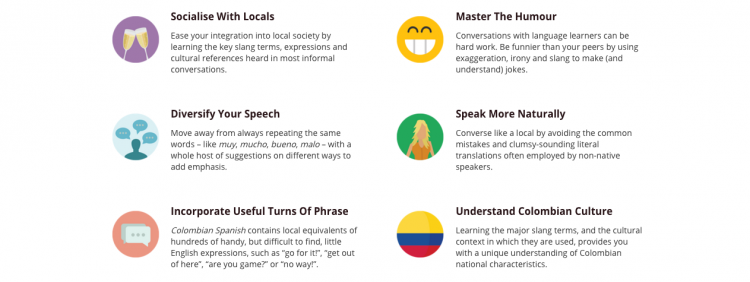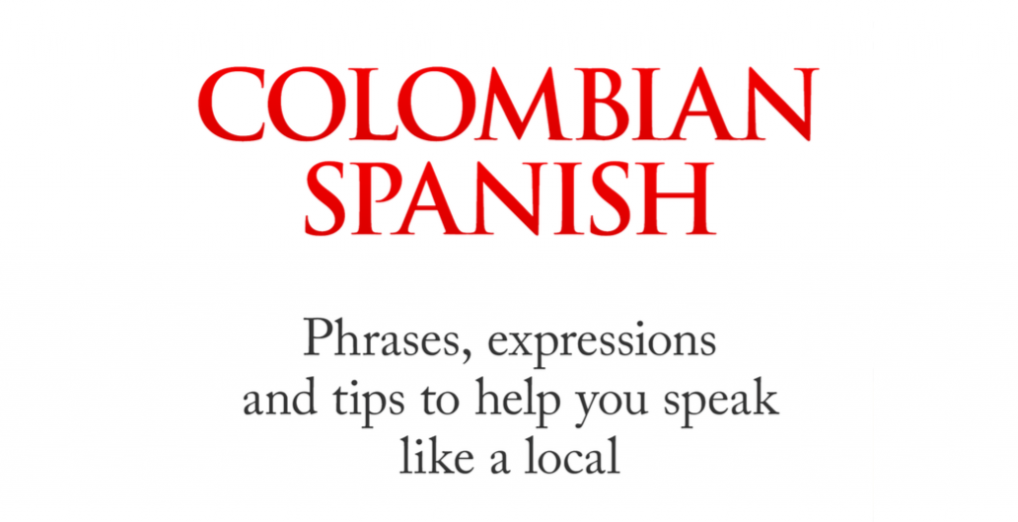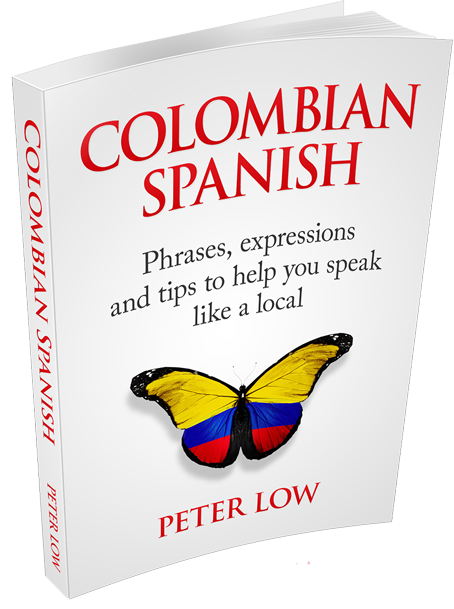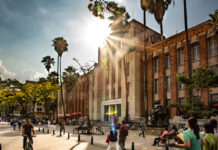Months ago, I was speaking to a friend from the States who had lived in Barcelona for some time. He was practicing his Spanish with me and we would switch from one language to another.
He talked about visiting Argentina in the future and if he should “lisp” his c’s and z’s while he’s there.
That’s when I told him that he’d soon realize that adjusting his pronunciation would not be the last language adjustment he’d have to make from Spaniard to Latin American Spanish.
Colombian Spanish, the book recently published by Pete Low, gave me that same feeling.
Knowing Spanish is one thing, but Colombian Spanish has all these little characteristics that, if you come here without having heard it, can make you feel like you don’t know Spanish at all!
Not to worry, though, Low’s book is meant to, more than teach, guide you through these strange “what does that even mean?” moments you’ll definitely run into in our beloved country.
It feels more like a travel guide through Colombian Spanish than a textbook with grammatical rules and exercises.

About the Author
Peter Low is a British journalist and translator, specializing in the language and politics of Colombia.
Like many expats in the city, Peter Low came to Medellín from England in 2007 with plans of passing through within a few days.
Again, like most, he fell in love with the City of the Eternal Spring and stayed for six months to learn Spanish, searching later for ways to continue living here finding an opportunity as a political analyst.
Recently, however, he decided to focus on international tourism in Colombia.
Within his many tips for traveling around Colombia, he includes a guide to Spanish in the country entitled, of course, “Colombian Spanish.”

“Colombian Spanish:” The Gringo’s Essential Companion
So, I’m probably not the first to tell you that Colombian Spanish has a fair share of differences with Mexican, Spaniard, Bolivian, Argentinian, etc., types of Spanish.
For one, while in Colombia our word for watermelon is “sandia,” in Mexico, it’s “patilla.”
While in Colombia, “pendejo” is just a way of calling someone an idiot, in Mexico, you best not say that word until you know when you actually can, because it’s an insult to be taken seriously.
These things can turn some people off language learning though for me it’s what makes it fun!
My mom speaks three languages and is constantly telling me how many French words we have in Spanish without even knowing it!
These things make our kind of Spanish unique, along with pronunciation, which Low in his book clarifies is different in different regions of Colombia, the coastal region pronouncing things one way, Antioquia another, Chocó distinctly, etc.
For anyone looking to “speak like a local,” which seems to be one of the trending topics lately when it comes to tourism and expats, this book is a great tool after you’ve already learned the basics.
It will help you wiggle into the “normal” topics and phrases that will have you sounding less like a dubbed movie and more like a Colombian.
The book accomplishes its purpose: to be helpful in your ease into local lingo. It is witty and interesting without being dense like a textbook.
I found that, although I already know Spanish, it was really interesting for me to read about what kinds of language mix-ups happen when you cross cultural references with a textbook knowledge of Spanish like Low had at first.
He is honest about his own experience which makes identifying with the book, himself, and the process of Spanish “Colombian style” a lot easier.
For example, he talks about the confusion at first, when hearing typical Colombian expressions:
“Often I could do little more than look on in complete bafflement as my new friends appeared to be chatting away happily about throwing dogs at old women (“echando los perros a esa vieja”) and meeting a monkey on a goat (“conocí al mono en la chiva”).” (Low)
We can all understand that learning a language and trying to speak like a local is arduous.
So when we read things like this following quote, in Low’s book, we feel that it’s not that language learning is impossible or that only certain people can do it, but rather that it’s a process full of not only obstacles, but finish lines:
“Developing the necessary local expressions and slang to be able to deal confidently with all social situations has, for me, been a lengthy process. At times, it has been tortuous; at others, a pure joy.” (Low)
I found, when moving back to Colombia after growing up in the States from age seven to fifteen, that I didn’t understand a lot of the local pop-culture references or jokes, or music, and all these things go far beyond “knowing the language.”
That’s something else you’ll find in Low’s book that isn’t available in other language guides.
The book includes things such as:
- Mastering Small Talk
- Everyday Requests
- Colombia Time>> expressions that involve time
- Socializing and Nightlife
- Dating and Romance
- Talking about People (stereotypes you should know about, characteristics, upstanding citizens, “from the wrong side of the tracks”, etc)
- Colombian expressions and idioms and several references on pop culture, narco culture, and family life that you’ll find useful.
It also includes some cursing, that Low explains he could not avoid due to these expressions included being an important part of Colombian Spanish embedded in the culture. They are all marked with a (v.) to be sure.
Other disclaimers include the fact that “Colombian Spanish” as a book isn’t really a hack to Spanish all over the country because different regions will have different expressions, but it is rather a general guide.
Finally, Low in his humble mode admits that though he’s been studying Spanish for years, “there is always more that could be discussed.”
He therefore includes several resources you can turn to if you’re looking for more information.
Where Can I Get It?
You can find the book on the Colombian Spanish website for $19.95 in Kindle, Epub and PDF formats.
The site also includes a blog featuring further tips for those looking to study or practice their Spanish in Colombia.
For more information, or to contact Peter himself, direct your emails to peter@colombianspanish.co.
______
Medellín Living received a review copy of the book; all opinions are the author’s own.













I would like a book (paperback or hard cover) not a download.
Hi Errol, I don’t believe the book is available as a paperback at this time (only digital download).
Where can I buy “Colombian Spanish” in Medellin?
Hello Redding,
I believe “Colombian Spanish” is only available as an ebook download.
You can find more information on the author’s website:
https://gumroad.com/a/365507699
Alan